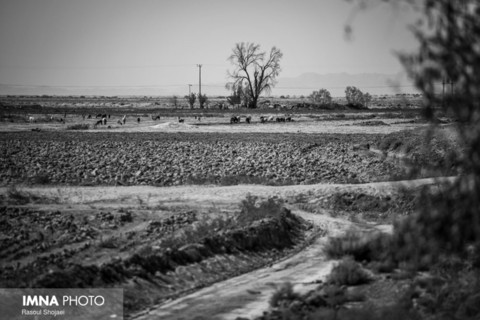Iran (IMNA) - According to Reza Shahbazi, deputy head of Geological Survey and Mineral Exploration, the industrial activities in Iran have contributed to a unique situation where the land is unable to absorb heavy rainfall. As a result, when rainfall occurs, flooding wreaks havoc across the county.
Despite being in a period of prolonged drought, Iran has experienced occasional heavy rainfall over short periods of time. Shahbazi emphasized that an analysis of rainfall indicators, deviations from long-term averages, and evaporation rates reveals that Iran has been in a drought since 1998. Nonetheless, there have been some years when the country received normal levels of rainfall.
Climate Change Fuels Extreme and Abnormal Events, Highlighting the Creepy Nature of Gradual Changes
In a chilling revelation, experts warn that the recent surge in extreme and abnormal events may serve as an alarming sign of climate change. The gradual occurrence of these events, which makes it difficult to pinpoint their exact timing, has raised concerns about the eerie nature of this global phenomenon.
According to scientific data, the concentration of carbon dioxide in the atmosphere has skyrocketed from 250 ppm to over 400 ppm since the early 20th century, largely due to the increased use of fossil fuels worldwide. This 1.7-fold increase in carbon dioxide levels is directly linked to the rising global temperatures and the emergence of disastrous events like torrential rains and dust storms.
Iran, having embarked on industrialization around six decades ago, has experienced a mounting strain on its water resources and lands due to various forms of exploitation. As a result, the nation now faces the grim consequences of land destruction through water and soil erosion, as well as the depletion of vegetation.
Nature's Degradation Leads to Increased Natural Incidents, Urgent Need for Holistic Approach
In a somber statement, Shahbazi expressed concern over the severe consequences of human activities, emphasizing that nature's ability to rejuvenate has been compromised due to widespread destruction and excessive exploitation. Consequently, nature is responding with a surge in natural incidents.
To mitigate the risks associated with these incidents in the short and medium-term, experts propose the implementation of comprehensive watershed, rangeland, and desertification management strategies in the plains. By adopting these measures, the adverse impacts of natural incidents can be significantly reduced.
The speaker also highlighted the limitations of relying solely on dam construction and waterway dredging for flood management. These conventional approaches are insufficient to effectively address the complexities of flood control. Therefore, a holistic approach that integrates multiple strategies is imperative to combat the challenges posed by natural incidents.

Rising Fossil Fuel Consumption Fuels Global Climate Change Crisis: Urgent Action Needed
Increasing human consumption of fossil fuels, particularly since the Industrial Revolution, has resulted in a surge of greenhouse gas emissions. This alarming trend is now driving climate change, emerging as a pressing global concern. The repercussions are far-reaching, with desert regions projected to lose their ecological capacities and wildlife compelled to migrate en masse. Iran, in particular, faces the grave challenge of climate change exacerbating drought and water stress. To combat these phenomena, it is imperative for the nation to formulate comprehensive plans at the national level.
Study Reveals Potential Impact of Doubled Carbon Dioxide Concentration on Iran's Climate
According to recent research and assessments conducted by Action for Climate Empowerment (ACE), an initiative endorsed by the United Nations Framework Convention on Climate Change (UNFCCC), and based on scenarios proposed by the Intergovernmental Panel on Climate Change (IPCC), a doubling of carbon dioxide concentration by 2100 could lead to a significant increase in Iran's average temperature. The study suggests that temperatures could rise by 1.5 to 4.5 degrees Celsius.
This potential rise in temperature could have far-reaching effects on Iran's climate and environment. Some of the anticipated consequences include changes in rainfall patterns, shifts in wind direction, rising sea levels, coastal degradation, destruction of agricultural and food resources, deforestation, depletion of freshwater sources, increased frequency of natural disasters such as tornadoes and floods, intensifying droughts, and the expansion of desert areas. Additionally, the study highlights the potential for increased air pollution due to rising hot winds, which could contribute to the spread of diseases like malaria.
These findings underscore the urgent need for action to mitigate the impacts of climate change and emphasize the importance of international cooperation in addressing this global challenge.


Your Comment